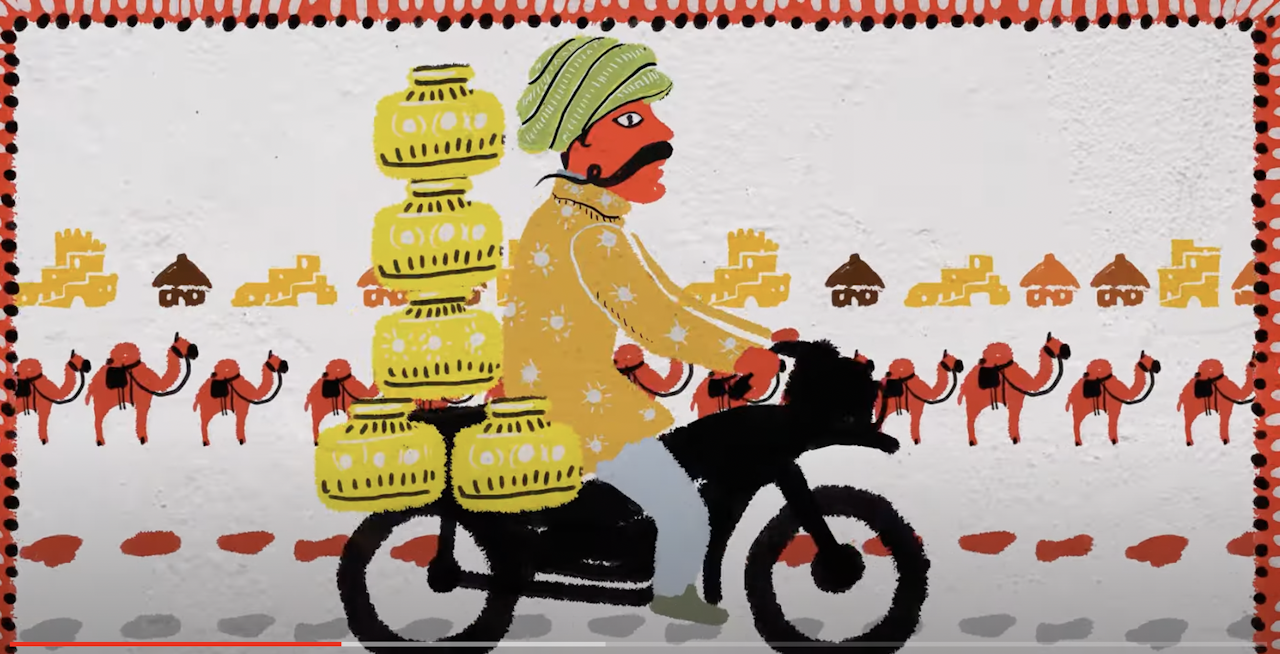Today's e-Edition
Get Morning Report and other email newsletters
Get Morning Report and other email newsletters
Today's e-Edition
Trending:
One good thing to come out of the pandemic lockdown: All those would-be crafters, who used to say, “If I only had the time, I’d take up needlepoint/pottery/quilting/painting,” got their chance.
As folks figured out creative ways to stay entertained, small crafts became big business. Crafts supply stores like Hobby Lobby and Michaels reported unexpectedly high sales during the pandemic, and their projections for 2022 remain strong. Etsy more than doubled its revenues in 2020, according to Forbes, and for the first nine months of 2021, sales were up 39 percent over the same period the year before.
Even smaller craft businesses felt the boost. “Our business tripled in 2020,” said Shannon Brinkley, a quilt and fabric designer based in Leesburg, Virginia. The author and quilting teacher also runs The Meander Guild, an international online forum for quilters. “We grew tremendously because so many people were looking for an artistic connection and had free time.”
“When people were stuck at home, they tried to think of new things to do, and creative sparks took root,” said Jeff Herman, editor in chief at Lawnstarter, a company that, among other things, does curious surveys. It just released its 2022’s Best Cities for Crafting report. (More on that in a minute.)
“We’ve all seen the stories about how many people spent the extra time and cash they had on hand during the pandemic on home improvement,” Herman said. “But fewer talked about how they used the time and cash to improve their homes and their quality of life through crafting. That is showing up as a huge trend.”
Indeed, as a society we went from wringing our hands to wringing tie-dye T-shirts and from knitting our eyebrows to knitting afghans. Crafts not only helped us pass the time and took our minds off the problems of the outside world, they made our homes look better and sometimes brought in some dough.
Kat Kennedy, of Newport News, Virginia, is a good example. “I’ve always enjoyed doing crafts,” she said. But when the pandemic hit, the 34-year-old mom took up finger knitting — no needles needed — and started churning out blankets with a vengeance.
“Before the pandemic, I’d probably made a total of three blankets in my life,” she said. Since Covid, she’s made 21. Several grace her home. Some she’s sold. Others she’s given as gifts or donated to the homeless.
Her boyfriend, Daniel Hardy, also caught craft fever. After Kennedy dragged him to a few thrift stores, he took an interest in old furniture. The 38-year-old medical insurance representative picked up a few worn but well-made pieces, including china cabinets, cedar chests and dressers, and taught himself how to restore them by watching YouTube videos. He now sells his renovated furniture through his ecommerce store.
“When the pandemic started, you couldn’t go out. Kids couldn’t go to school,” said Kennedy, who works from home doing customer service for a gardening company. “Knitting and furniture restoring occupied our time and took our minds off all that was going on. Crafts have really brought us together.”
And they do it all in the living area of a 925-square-foot apartment. She knits in an oversized armchair, while Hardy works nearby in a portion of the dining room they’ve converted into a workshop and covered with drop cloths.
Now back to the craftiest cities. According to the Best Cities for Crafters survey, the top five are New York, San Francisco, Miami, Seattle, and Patterson, NJ — and the worst, coming in at number 200, was Enterprise, Nev. Here are the qualities researchers found that can help fire up crafters’ glue guns:
Access to materials: Having a lot of craft supply stores per square mile helped boost a city’s ranking, as did an abundance of hardware, fabric and thrift stores.
Craft community: Cities with high local artist participation in Artists Sunday — an art-shopping event held every November in cities across America — ranked high, along with those with many craft meet-up groups.
Educational opportunities: The more art classes and craft workshops a town offers and the more schools that provide art and craft courses, the greater the opportunity for artistic growth and enrichment
Art events: A final measure of a city’s craft potential is how many art events, craft fairs and art festivals are hosted each year. Whether you tap into a creative community online or in person, artists do better when they engage with other artists.
Join me next week as we talk about what every craft room should have.
We invite you to use our commenting platform to engage in insightful conversations about issues in our community. We reserve the right at all times to remove any information or materials that are unlawful, threatening, abusive, libelous, defamatory, obscene, vulgar, pornographic, profane, indecent or otherwise objectionable to us, and to disclose any information necessary to satisfy the law, regulation, or government request. We might permanently block any user who abuses these conditions.
Get Morning Report and other email newsletters
Copyright © 2022 MediaNews Group


